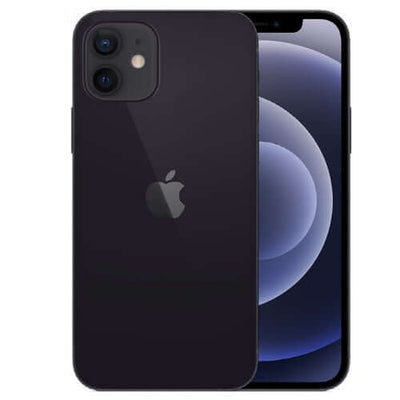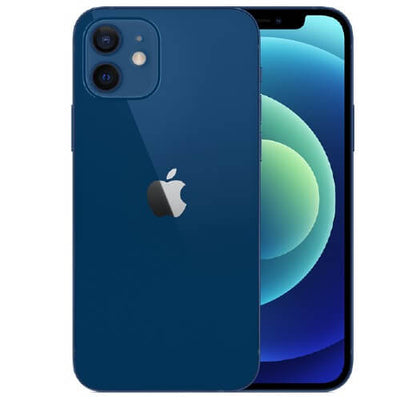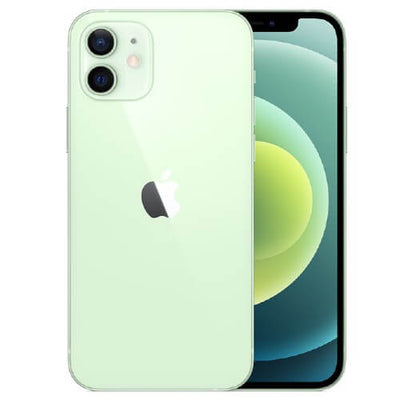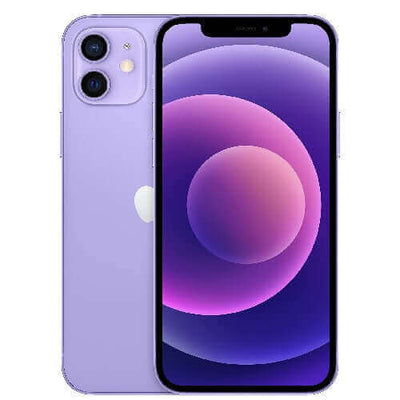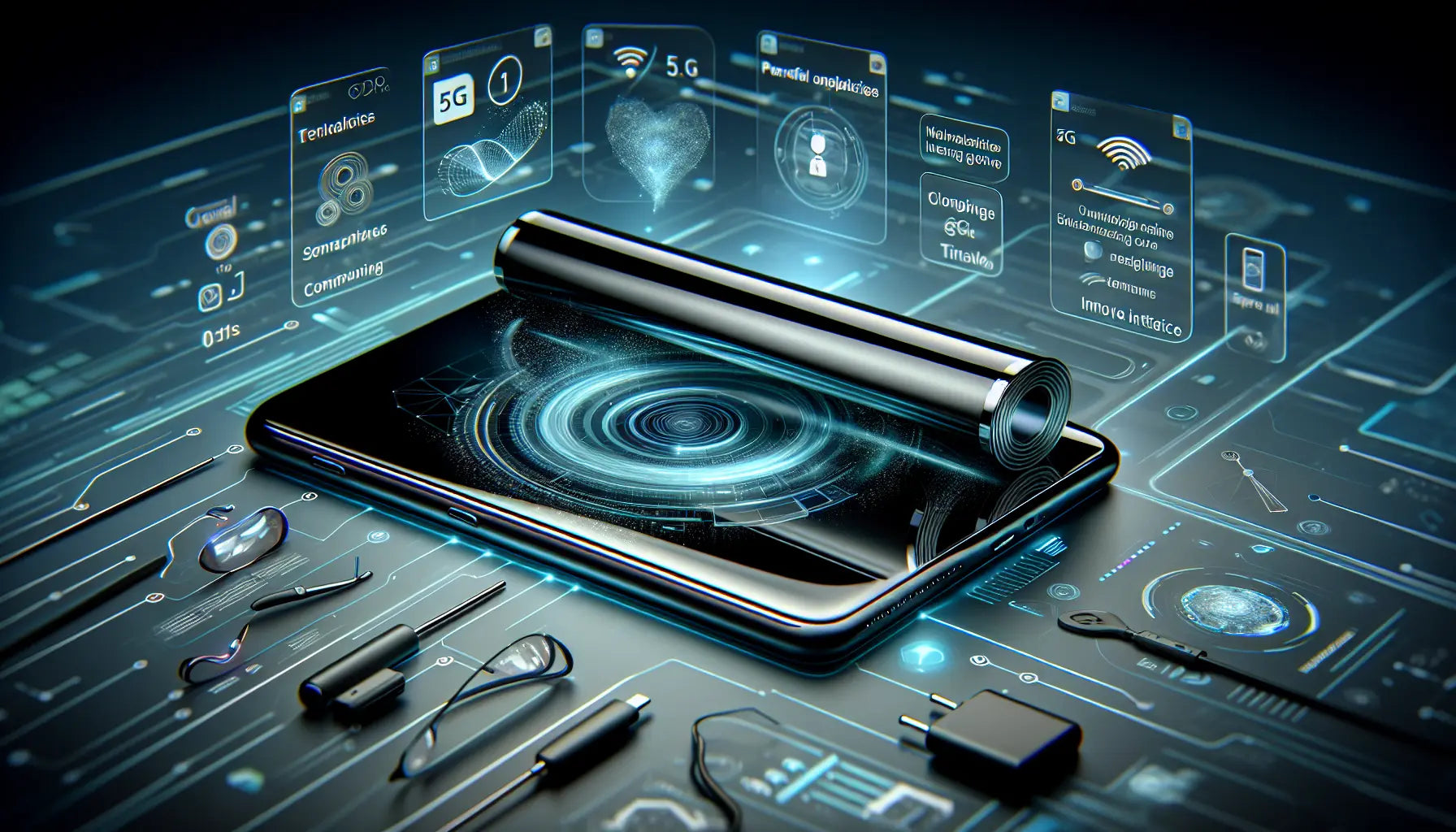Introduction
The impact of mobile phones on society has been nothing short of revolutionary, reshaping them from basic communication tools into indispensable devices that influence both our professional and social spheres. As someone with a keen interest in foreseeing what lies ahead, it becomes imperative to dissect the ongoing developments and forecast the future trajectories of the phone industry.
In the dynamic landscape of smartphones, significant strides have paved the way for more intelligent devices boasting enhanced capabilities. A case in point is Qualcomm's groundbreaking mobile phone chip, a powerhouse capable of executing a staggering 32 trillion operations per second. This not only facilitates resource-intensive tasks like video editing directly on our phones but also heralds a new era of mobile computing. Moreover, the evolution of connectivity, with the advent of 5G and improved Wi-Fi, amplifies the scope for cloud-based services, unlocking the full potential of machine learning and artificial intelligence on our handheld devices.
In tandem with these advancements, the very design of phones is undergoing a paradigm shift. Departing from conventional touch displays, we are witnessing the emergence of flexible screens, offering increased real estate without compromising on portability. Tech giants like Samsung, Huawei, Motorola, and LG are at the forefront, introducing innovative devices featuring foldable and rollable screens.
Another noteworthy trend is the liberation from cords. Bluetooth and Wi-Fi connectivity have become the standard, with wireless charging capabilities advancing at a rapid pace. Pioneering companies like Powercast are already introducing radio wave charging solutions, rendering physical charging cables obsolete.
Peering into the future, it's evident that the traditional concept of phones is on the brink of a radical transformation. The devices we currently associate with phone calls might soon be eclipsed by avant-garde interfaces like smart glasses, contact lenses, or even subdermal implants. The realm of neural interface technology, already in development, promises a revolution in human-technology interaction, allowing us to control devices with our thoughts.
The future of phones is an open canvas, teeming with possibilities. Understanding these evolving trends is not just advantageous but imperative to navigate the ever-changing landscape of smartphones successfully.
Smarter Phones
The future of smartphones promises a remarkable evolution, driven by continuous technological advancements. A noteworthy development in this trajectory is Qualcomm's latest mobile phone chip, boasting an impressive capability of 32 trillion operations per second. This significant leap in computing power allows smartphones to undertake heavy workloads that were previously the domain of desktops or laptops. A striking implication is the newfound ability to perform tasks like video editing directly on our phones, ushering in a era of heightened convenience and efficiency.
Looking ahead, the landscape of smartphones will witness substantial improvements in connectivity. The integration of technologies like 5G and enhanced Wi-Fi not only delivers faster and more reliable internet access but also sets the stage for the proliferation of cloud-based services. This enhanced connectivity empowers smartphones to harness the potential of machine learning and artificial intelligence applications, elevating their overall capabilities.
A standout area of excellence for future smartphones lies in video editing capabilities. With the combination of augmented computing power and superior connectivity, smartphones will offer advanced features for editing and enhancing videos. Users can expect to seamlessly perform intricate edits directly on their smartphones, eliminating the dependence on additional devices or software.
Moreover, smartphones are poised to become indispensable tools for artificial intelligence (AI) and machine learning applications. Their augmented computing prowess enables them to proficiently handle complex AI algorithms and process substantial amounts of data. This opens up exciting possibilities for a range of AI-powered applications, including virtual assistants, personalized recommendations, and predictive analytics. The convergence of enhanced computing power, improved connectivity, and AI integration paints a compelling picture of smartphones becoming even more powerful and versatile in the future.
Advancements in Connectivity Shaping the Future of Smartphones
The evolution of smartphone technology is at the forefront of innovation, and a pivotal aspect driving this progress is the continuous improvement in connectivity. Let's delve into the key advancements poised to elevate the capabilities of smartphones in the near future.
1. The Rise of 5G Connectivity
A groundbreaking development on the connectivity front is the advent of 5G. This cutting-edge network technology is set to transform smartphones, offering accelerated download and upload speeds, minimized latency, and heightened connection reliability. With 5G, the landscape of smartphone usage will witness a paradigm shift, empowering users to effortlessly stream high-quality videos, engage in immersive online gaming, and download sizable files in mere seconds.
2. Elevated Wi-Fi Connectivity
Beyond the realms of 5G, smartphones are set to reap the benefits of upgraded Wi-Fi connectivity. This translates to swifter internet access, broader coverage, and heightened stability. The result? Users can savor uninterrupted experiences in browsing, video calling, and online gaming, as smartphones seamlessly integrate with enhanced Wi-Fi capabilities.
3. Harnessing the Power of Cloud Technology
The forthcoming generation of smartphones will leverage the prowess of cloud technology to augment their functionalities. By storing data and applications in the cloud, smartphones can tap into a vast repository of resources, liberating them from dependence on internal storage or processing power alone. This unlocks the door to an array of advanced applications, including real-time language translation, personalized virtual assistants, and cloud-based gaming.
4. The Confluence of Machine Learning and Artificial Intelligence
Machine learning and artificial intelligence (AI) are poised to become integral components in the future of smartphones. With heightened connectivity and enhanced processing capabilities, smartphones can harness AI algorithms to deliver personalized recommendations, predictive analytics, and advanced image recognition. This seamless integration will render smartphones not only more intelligent but also more intuitive, catering to the unique needs and preferences of individual users.
In summation, the trajectory of smartphones is unmistakably tied to improved connectivity. The convergence of 5G, upgraded Wi-Fi, cloud technology, and the amalgamation of machine learning and AI will render smartphones not just powerful devices but indispensable companions in our daily lives.
Flexible Screens
In the dynamic landscape of smartphone evolution, an intriguing development takes center stage—the shift from conventional touchscreen phones to the realm of flexible screens. This groundbreaking technology holds the promise of reshaping our interactions with mobile devices, bringing about a wave of excitement for the future.
A standout advantage of flexible screens lies in their ability to expand screen real estate without compromising on portability. Companies such as Samsung, Huawei, Motorola, and LG are at the forefront of this innovation, exploring the possibilities of foldable and rollable screens. This bold design approach allows users to enjoy a larger display when needed, all while maintaining the convenience of pocket-sized portability.
Envision a smartphone seamlessly unfolding into a tablet-sized screen, providing an immersive video viewing experience or enabling multitasking with multiple apps open side by side. This level of flexibility heralds a new era for productivity, entertainment, and creativity in the realm of mobile devices.
While devices featuring flexible screens currently carry a higher price tag and remain less mainstream, industry expectations anticipate increased affordability and widespread adoption in the years to come. As the technology matures and production costs decrease, consumers can look forward to a broader array of options and price points.
The integration of devices with flexible screens into mainstream use not only promises an enhanced user experience but also serves as a catalyst for further innovations in smartphone technology. This adoption encourages manufacturers to continually push the boundaries of design and functionality, paving the way for even more innovative features and capabilities.
In summary, the transition to flexible screens marks an exhilarating trend in the future of smartphone technology. This shift offers users expanded screen real estate without compromising on portability, and the market is poised to see an influx of devices featuring foldable and rollable screens. As these devices become more accessible, they are set to redefine the way we engage with our smartphones, unlocking new possibilities and transforming the mobile experience as we know it.
Wireless Charging
Wireless charging has transformed the way we power up our smartphones, bidding farewell to the hassles of tangled cables and the quest for power outlets. The convenience of charging devices without physical connections has become a game-changer.
One notable advantage of wireless charging is its speed. Innovations like Powercast's radio wave charging solutions have revolutionized the landscape, enabling efficient and rapid charging for smartphones. Thanks to these advancements, achieving a full charge now takes as little as 40 minutes, surpassing the traditional speed of wired charging.
The evolution of wireless charging pads and accessories is an ongoing process. Manufacturers are continually enhancing charging pads for better efficiency and broader device compatibility. This ongoing effort ensures users experience seamless charging across a variety of smartphones.
The introduction of radio frequency (RF) charging solutions marks a pivotal moment in wireless charging technology. These solutions transmit energy through radio waves, converting it into direct current (DC) to charge the phone. This means users can now charge their devices without any physical contact, providing added convenience and flexibility.
Looking ahead, the future of wireless charging holds even more exciting prospects. Researchers are delving into technologies like over-the-air charging, envisioning a scenario where devices can be wirelessly charged from a distance. This potential development could eliminate the need for charging pads altogether, reshaping how we power our smartphones.
In summary, wireless charging is a rapidly advancing technology that not only delivers faster charging but also eliminates the hassle of cables. The continuous improvements in charging pads and the advent of RF charging solutions paint a promising picture for the future of wireless charging. As technology progresses, we can anticipate even more convenient and efficient ways to keep our smartphones powered up.
The Future of Phones
The landscape of phones is on the brink of transformation as technology continues its relentless march forward. We're witnessing a departure from the conventional touch displays that have dominated the scene for years. Industry giants like Samsung, Huawei, Motorola, and LG are at the forefront, introducing devices featuring foldable and rollable screens. These flexible displays promise users a larger visual canvas without compromising on portability. It's only a matter of time before these cutting-edge features become more accessible to the masses, ushering in a new era of smartphones.
Looking ahead, the future might not just be about handheld gadgets with traditional interfaces. Imagine a smartphone that seamlessly transforms into a tablet-sized screen or donning glasses that transport you into a cinematic world. These alternative interfaces hold the potential to redefine our relationship with mobile devices, offering novel avenues for productivity, entertainment, and creativity.
Intriguingly, subdermal implant technology emerges as a potential game-changer. The idea of embedding the processing power or computing components beneath our skin creates a harmonious integration between technology and our bodies. While still in the nascent stages of development, subdermal implants could unlock innovative ways of accessing and interacting with digital information.
Meanwhile, strides in neural interface technology are paving the way for mind-controlled devices. Companies like Neurable, Facebook, and Neuralink are actively exploring brain interfacing, enabling us to interact with technology using our thoughts. This breakthrough could potentially eliminate the need for physical interfaces altogether, fundamentally transforming the way we communicate with our devices.
As of now, phones serve as the quintessential gateway to the digital realm, offering unparalleled convenience and frictionless access. However, the future may see a departure from this norm. Phones could become seamlessly integrated into our bodies or replaced by wearable devices, providing a more intuitive and streamlined approach to interacting with technology.
In essence, the future of phones is a canvas of thrilling possibilities that extends far beyond conventional designs. Technological advancements are poised to bring forth alternative interfaces, subdermal implants, neural interface technology, and novel access points to the digital landscape. To navigate this ever-evolving smartphone terrain, staying abreast of these trends becomes not just advisable but imperative.
FAQs
1. How is Qualcomm's latest mobile phone chip revolutionizing smartphones?
Qualcomm's latest chip boasts an impressive capability of executing 32 trillion operations per second, enabling smartphones to handle tasks like video editing directly on the device. This marks a significant leap in computing power, enhancing convenience and efficiency.
2. What role does 5G play in shaping the future of smartphones?
5G is a groundbreaking network technology that accelerates download and upload speeds, minimizes latency, and enhances connection reliability. This transformative technology empowers smartphones for tasks like streaming high-quality videos, immersive gaming, and rapid file downloads.
3. How are flexible screens changing the landscape of smartphone design?
Flexible screens, introduced by companies like Samsung, Huawei, Motorola, and LG, offer increased screen real estate without compromising portability. These screens can fold or roll, providing users with a larger display when needed, ushering in a new era for productivity, entertainment, and creativity.
4. What advantages does wireless charging bring to smartphones?
Wireless charging eliminates the need for physical connections, offering convenience and speed. Innovations like Powercast's radio wave charging enable efficient and rapid charging, reducing the time required to achieve a full charge.
5. How is artificial intelligence (AI) integrated into future smartphones?
Enhanced computing power and connectivity allow smartphones to proficiently handle complex AI algorithms. This integration opens up possibilities for AI-powered applications, including virtual assistants, personalized recommendations, and predictive analytics.
6. What are the potential alternatives to traditional smartphones in the future?
The future may introduce alternative interfaces such as smart glasses, contact lenses, or even subdermal implants. These interfaces could redefine our relationship with mobile devices, offering novel avenues for productivity, entertainment, and creativity.
7. How is subdermal implant technology changing the landscape of smartphones?
Subdermal implants, while in early stages of development, could harmoniously integrate processing power or computing components beneath the skin. This potential innovation could provide innovative ways of accessing and interacting with digital information.
8. What is the significance of neural interface technology in the future of phones?
Neural interface technology, explored by companies like Neurable, Facebook, and Neuralink, enables mind-controlled devices. This breakthrough has the potential to eliminate the need for physical interfaces, fundamentally transforming the way we communicate with devices.
9. How is the design of smartphones evolving beyond traditional touch displays?
The emergence of flexible screens, featuring foldable and rollable designs, is changing smartphone design. This trend, led by tech giants, promises users a larger visual canvas without compromising on portability.
10. How can users stay informed and navigate the evolving landscape of smartphones successfully?
Staying informed about ongoing developments, such as advancements in connectivity, flexible screens, wireless charging, and alternative interfaces, is imperative. Regularly updating oneself on these trends ensures a proactive approach to embracing the future of smartphones.
